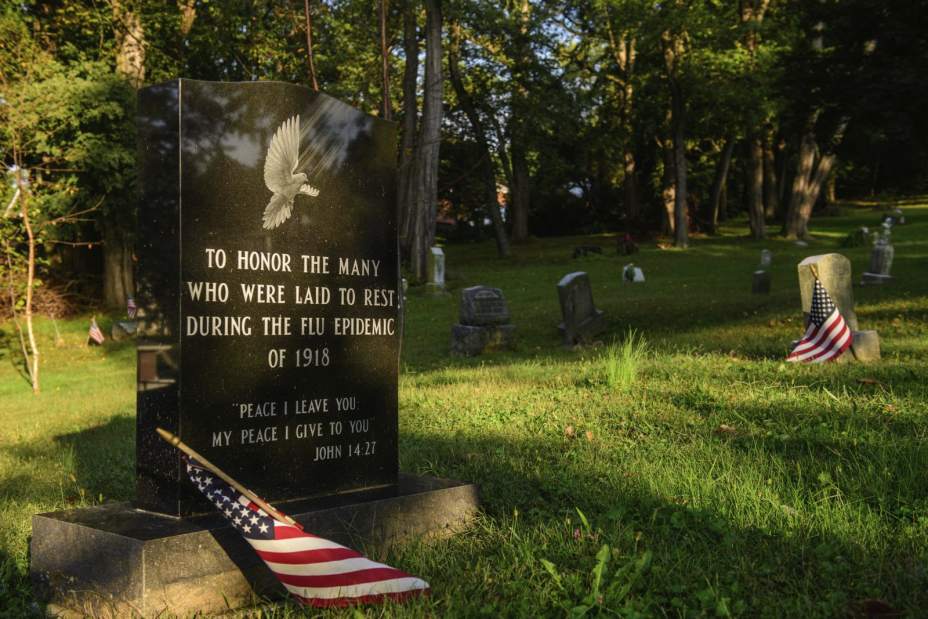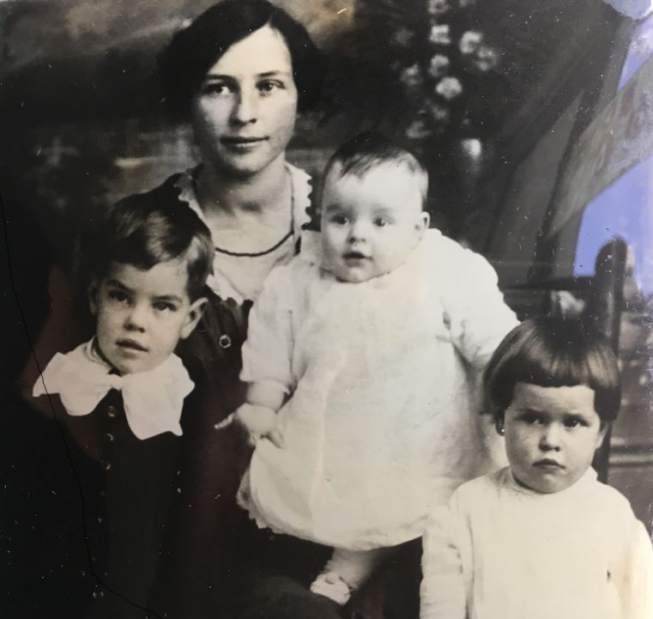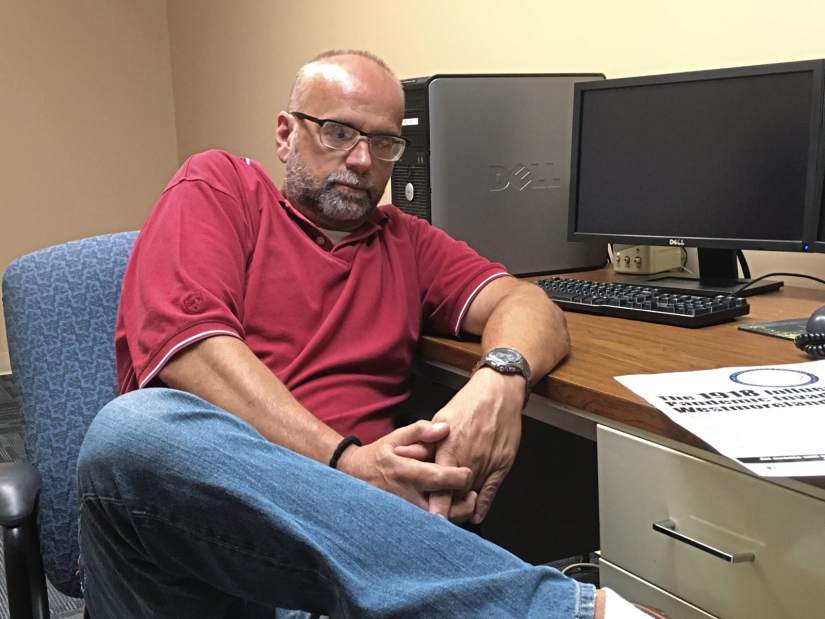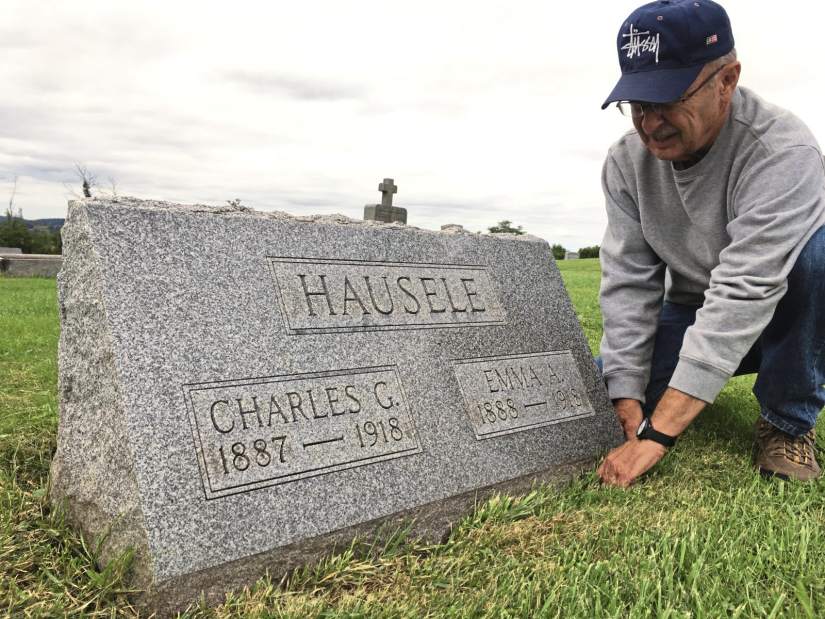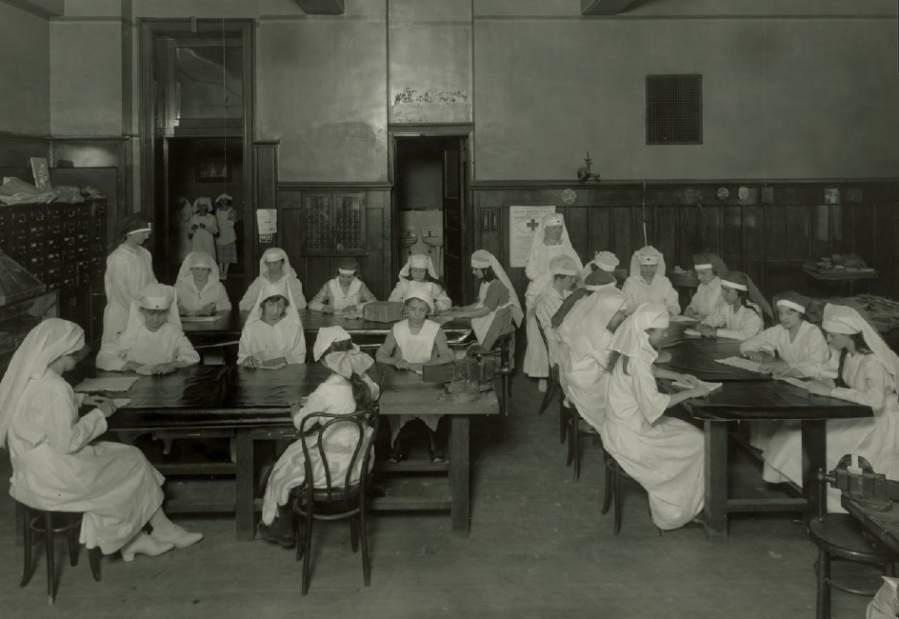Flu pandemic of 1918 devastated Western Pa. families in staggering numbers
Westmoreland recalls 1918 flu toll
Local stories and statistics reveal deadly impact of influenza pandemic as centennial of disease’s peak is marked.
Two sisters from Greece remained close after emigrating to Western Pennsylvania early in the 20th century.
Susana Mazarakis Pavlakis and Mary Protos both settled in Vandergrift and began raising families when an unseen visitor — a quickly spreading, deadly influenza virus — splintered their households.
Its dark legacy would affect generations to come, including Pavlakis’ great-granddaughter, Loretta Sword of North Huntingdon.
A century after Pavlakis succumbed on Dec. 4, 1918, in the midst of the world’s deadliest influenza pandemic, Sword required help from a cousin to translate the Greek inscription on her great-grandmother’s gravestone.
That’s because Sword’s grandmother, Christine, then 3, was separated from her father, her 2-year-old brother, James, and the family’s Greek culture when she was sent to live with a relative after her mother’s untimely death at age 20.
Other branches of the family followed and passed down ethnic customs. Christine Pavlakis and her descendants missed that connection.
“A lot of the traditions were lost because she was separated from her father,” Sword said. “Grandmother suffered from losing her mother at a very young age. She had a very difficult life.”
Spurred by a longtime interest in such diseases, Thomas Soltis, an assistant professor of sociology at Westmoreland County Community College, is among those shining a light on the pandemic during its 100th anniversary.
“By the time we get to the first full week of October 1918, the disease has arrived in this area of Pennsylvania with a vengeance … we’d not seen before or seen since,” Soltis said. “There probably isn’t a family in Westmoreland County that isn’t impacted in some way by this disease.”
Charles N. Patterson, 29, of Aspinwall became the first known victim of the flu in the Pittsburgh area when he died Oct. 5, 1918, at St. Francis Hospital. That same day, the Army infirmary in Pittsburgh’s Point Breeze neighborhood reported one soldier dead, one dying and one in serious condition; 60 others were receiving hospital care.
“The first death in this area was 17-year-old student Mildred Sowash, in Greensburg High School,” Soltis said. The end of her brief life was reported Oct. 7, 1918, in the Greensburg Daily Tribune.
Over the next few months, the flu pandemic ripped through Western Pennsylvania.
Countless temporary hospitals were set up across Pittsburgh and the region, including in Scottdale, Tarentum and Natrona — where flu cases were first reported Oct. 8. The Greensburg Country Club housed an emergency ward, as did the borough building and several fraternal halls in Youngwood.
Tens of thousands of people in Allegheny and Westmoreland counties were sickened. About 2,000 died in Westmoreland County. The death toll in Pittsburgh alone topped 4,500, by conservative estimates.
‘Ferocity of a hurricane’
The disease took a particularly cruel toll in the Vandergrift home of Mary Protos, who lost two children to the flu in the same week it claimed her sister.
Undertakers couldn’t keep up with the rapidly mounting deaths, leaving Protos’ husband, Nick, to bury their children.
“Nick had a wooden coffin dropped off at the house,” Sword said. “He had to clean and dress his children. He placed the boys in the coffin and took them by horse and buggy to a cemetery in Vandergrift for burial. He dug the grave and buried them himself.”
The devastation was repeated across the country, with nearly 700,000 people perishing in just 10 months, Soltis noted.
That far outnumbers the roughly 423,000 Americans killed in action in all U.S. conflicts from World War I through Vietnam.
Unlike typical seasonal flu strains, the 1918 virus disproportionately felled people in the prime of life, between their 20s and 40s.
“It killed at a much higher rate, within 48 to 72 hours after you got it,” Soltis said.
“What fascinates me most is the speed with which the disease showed up,” he said. “In Monessen, it struck the city with the ferocity of a hurricane.
“No one seemed to be able to escape from it. One or two representatives from Pennsylvania died. A few council members in Monessen died, and some who were related to council members died.”
By Oct. 25, Monessen reported more than 1,000 flu cases; Greensburg had at least 1,500.
When Jan Moore of Derry Township gets her annual flu vaccine, she thinks of her grandmother, Ruby King, who didn’t have that option. When King died Oct. 28, 1918, at age 28, she left behind in Murrysville her husband, Thomas, and four young children, including a newborn boy.
“She passed away one week after she gave birth,” Moore said.
Burials in local cemeteries spiked in the fall, Soltis discovered. Monthly burials at Union Cemetery in North Huntingdon jumped from 10 in August to more than 40 in October. At Greensburg Catholic Cemetery in Hempfield, burials went from about the same number in August to nearly 60 in November.
“There was a family in Pleasant Unity of 12, and eight of them died in a week,” Soltis said.
The Greensburg Daily Tribune reported on the tragic fate of Charles Hausele’s family. His wife, Pauline, and a son, Jacob, died Nov. 7. Daughter Joanna and son Edward perished the next day. They were followed on Nov. 10 by three more children: Lillie, Mathias and Charles, whose wife, Emma, also had died Nov. 7.
All that remained of the family’s younger generation were three sons — Joseph, who was in the military service, and two teenagers, Dan and William. The family patriarch also survived, returning several times to his native Germany, remarrying and divorcing before his death in 1938, according to Virginia Hausele, whose late husband, the Rev. Raymond Hausele, was Dan’s son.
The flu deaths “really did affect” the survivors, Virginia Hausele said, noting Dan went to work in the coal mines.
“I know it scarred him,” she said, “because he had to fend for himself at such a young age.”
A hundred years later, the deadly pandemic still makes an impression on younger generations who didn’t live through it and mostly think of 1918 as the end of World War I.
“This seems to be a piece of history we don’t concentrate on,” Soltis said of the Spanish flu. “The devastation may have been so much that people may have said, ‘Let’s close the door and move on.’
“I think it gets pushed off to the side. We need to take our time and commemorate it.”
Editor’s note: On Monday, the Tribune-Review will look at the 1918 influenza pandemic’s lasting medical legacy and lessons learned by researchers.
Jeff Himler is a Tribune-Review staff writer. You can contact Jeff at 724-836-6622, jhimler@tribweb.com or via Twitter @jhimler_news.

